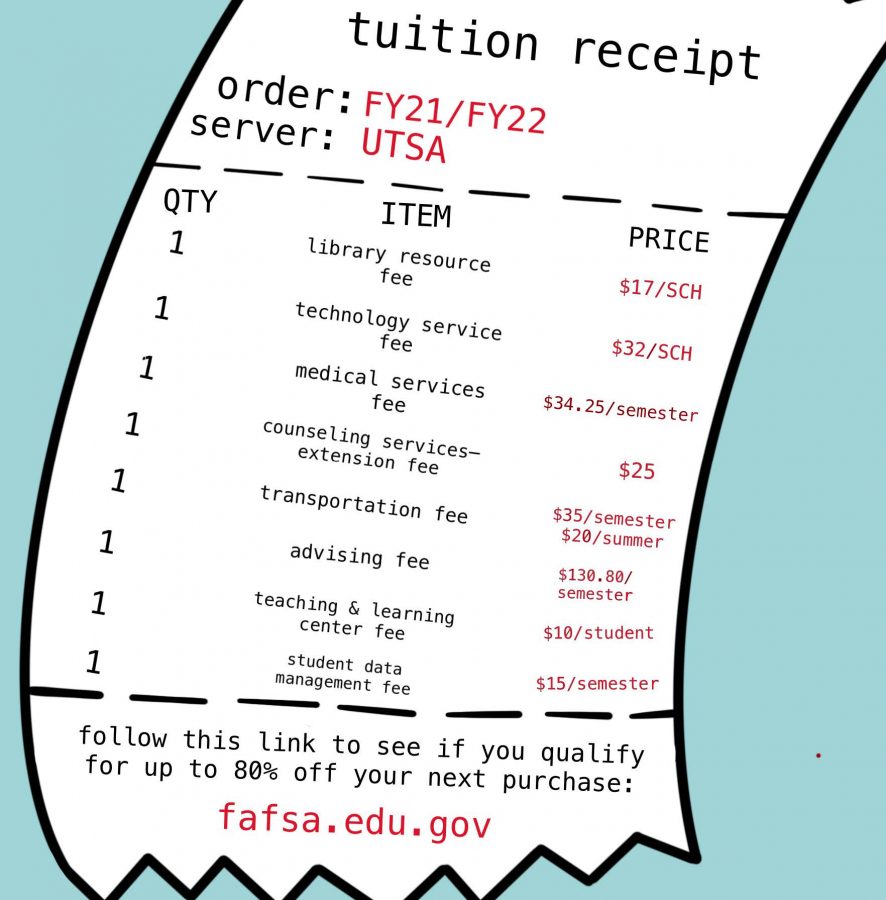UTSA plans to increase tuition and fees for fiscal years (FY) 21 and 22, starting Fall 2020, with another increase set for Fall 2021. The university has consistently offered the lowest tuition and fees increase among the University of Texas (UT) System institutions. UT System institution increases have ranged from $592 to $2,414 over the past five years compared to UTSA’s $511 increase per academic year.
With a deadline of Nov. 1, President Taylor Eighmy will be the final authority on which proposals to send to the UT System Board of Regents. The UT System Board of Regents will make the final decision on the proposed tuition and fees increase. UTSA is proposing a tuition increase ranging from $134.68 to $387.89 (2.5% to 7.2%) per academic year for two consecutive years. The Academic Council, University Leadership Council, President’s Cabinet and various student organizations have contributed to the tuition and fees proposal process.
Due to critical needs and added services to improve students’ experiences, the following fees have been adjusted to be included in the final proposal: Library Resource Fee increase from $5 per semester credit hour to $17 per SCH; Technology Service Fee increase from $28 per SCH to $32 per SCH; Medical Services Fee increase from $32.70 per semester to $34.25 per semester; Counseling Services will implement a $25 service extension fee; Transportation Fee increase from $20 to $35 per semester and $20 for the Summer term; Advising Fee increase from $120 to $130.80 per semester; Teaching and Learning Center Fee increase from $5 to $10 per student; and Student Data Management Fee increase from $10 to $15 per semester.
Additionally, in an email to students sent on Oct. 22, Provost and Senior Vice President for Academic Affairs Dr. Kimberly Espy said, “Because we understand the challenges that families face, our FY 21/FY 22 tuition and fees proposal promotes affordability by further setting aside substantial aid funding to benefit UTSA students who are less advantaged financially.” This allows students to receive financial aid that covers an average of 80% of the cost of attendance if their median household income is less than $50,000 per year.








